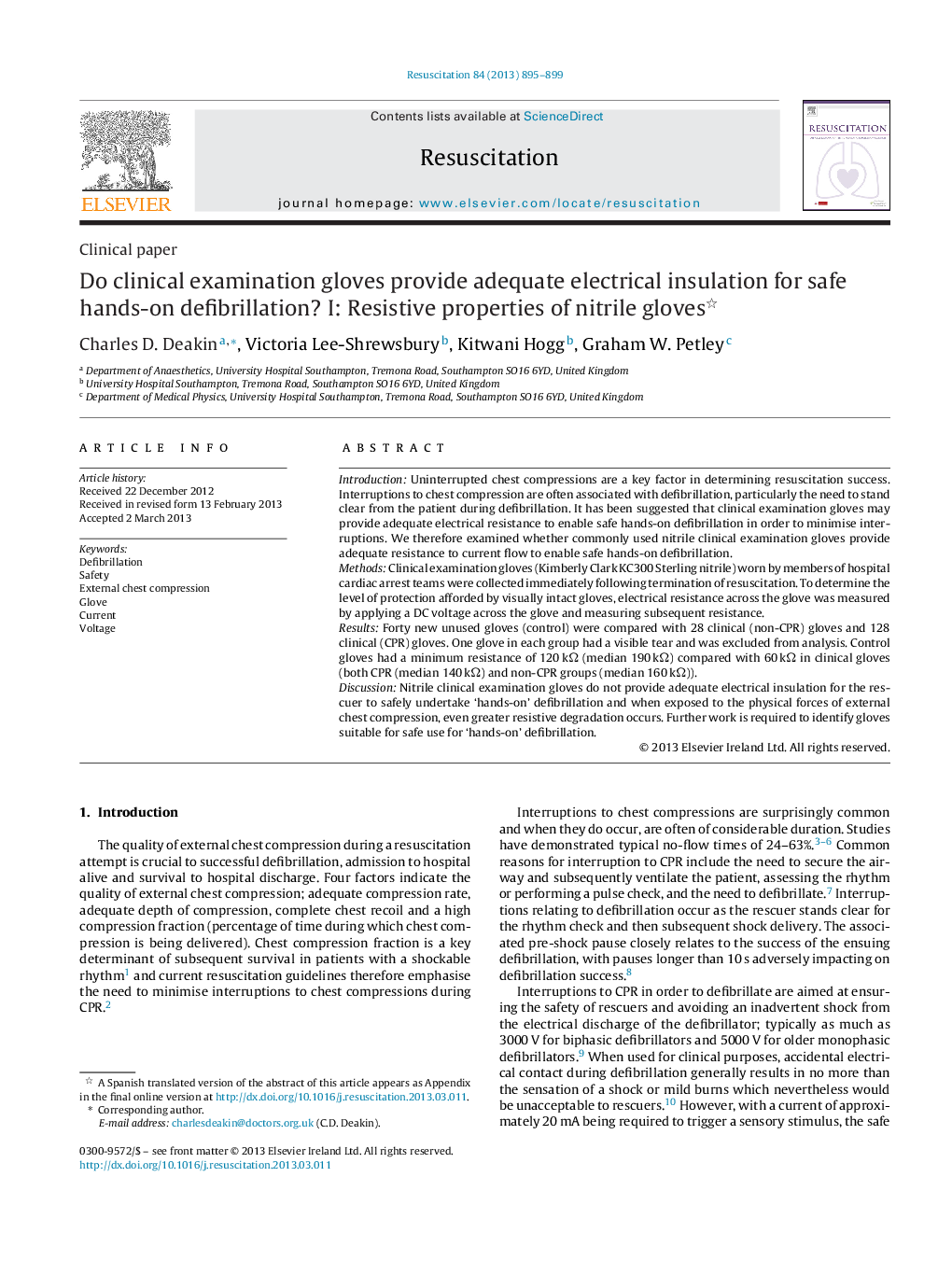| Article ID | Journal | Published Year | Pages | File Type |
|---|---|---|---|---|
| 3008039 | Resuscitation | 2013 | 5 Pages |
IntroductionUninterrupted chest compressions are a key factor in determining resuscitation success. Interruptions to chest compression are often associated with defibrillation, particularly the need to stand clear from the patient during defibrillation. It has been suggested that clinical examination gloves may provide adequate electrical resistance to enable safe hands-on defibrillation in order to minimise interruptions. We therefore examined whether commonly used nitrile clinical examination gloves provide adequate resistance to current flow to enable safe hands-on defibrillation.MethodsClinical examination gloves (Kimberly Clark KC300 Sterling nitrile) worn by members of hospital cardiac arrest teams were collected immediately following termination of resuscitation. To determine the level of protection afforded by visually intact gloves, electrical resistance across the glove was measured by applying a DC voltage across the glove and measuring subsequent resistance.ResultsForty new unused gloves (control) were compared with 28 clinical (non-CPR) gloves and 128 clinical (CPR) gloves. One glove in each group had a visible tear and was excluded from analysis. Control gloves had a minimum resistance of 120 kΩ (median 190 kΩ) compared with 60 kΩ in clinical gloves (both CPR (median 140 kΩ) and non-CPR groups (median 160 kΩ)).DiscussionNitrile clinical examination gloves do not provide adequate electrical insulation for the rescuer to safely undertake ‘hands-on’ defibrillation and when exposed to the physical forces of external chest compression, even greater resistive degradation occurs. Further work is required to identify gloves suitable for safe use for ‘hands-on’ defibrillation.
